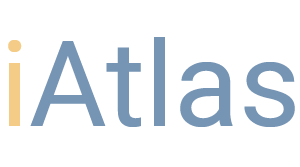Tutorials
- Classify gene expression data in the 6 Immune Subtypes described by Thorsson et al, 2018 (Tutorial)
- Create a Cohort in iAtlas (Tutorial)
- Compare outcome data in Immune Checkpoint Inhibition datasets using Cox proportional hazard models (Tutorial)
- Create a Machine Learning model using the data on Response to Immune Checkpoint Inhibitors (Tutorial)
- Explore neoantigen data in CRI-iAtlas (Tutorial)
FAQ
The Cancer Research Institute (CRI) iAtlas is an interactive web platform and a set of analytic tools for studying interactions between tumors and the immune microenvironment.
CRI iAtlas is made possible through a collaboration between the Cancer Research Institute, Sage Bionetworks, the Institute for Systems Biology, and the Vincent Lab at the UNC Lineberger Comprehensive Cancer Center.
Please cite the CRI iAtlas paper (PubMed: 33214875) when you use CRI iAtlas.
Eddy JA, Thorsson V, Lamb AE, Gibbs DL, Heimann C, Yu JX, Chung V, Chae Y, Dang K, Vincent BG, Shmulevich I, Guinney J. CRI iAtlas: an interactive portal for immuno-oncology research. F1000Research 2020, 9:1028.
Please send us a message to support@cri-iatlas.org. Also consider opening a Github issue in the app repository.
Yes!
The code for the CRI iAtlas web app is open source and available at our Github repository .
We also have a collection of notebooks that you can run to carry out functionality made available by the iAtlas platform, as well as how carry out additional functions, such as enabling the integration of your data with what’s already in iAtlas.
You can access our workflows in Dockstore.
Yes! If you would like to contribute code changes please follow these steps:
- Search the issues list in the repo. Consider opening an issue related to the suggested feature.
- For new code development, create a personal fork and commit new code in that fork.
- Propose changes via pull request of personal branches.
If you want to contribute data to iAtlas, please contact us.
We have a collection of notebooks that you can run to carry out functionality made available by the iAtlas platforms, which enables the integration of your data with what’s already in iAtlas.
You can learn more about Cancer Genomics datasets available in CRI iAtlas in their original sources: TCGA and PCAWG.
You can learn more about the Immune Checkpoint Inhibition datasets in the Datasets Overview module.
The method to classify Immune Subtypes is described at Robust classification of Immune Subtypes in Cancer | bioRxiv.
A description of variables and methods is available in the Data Description section of the CRi iAtlas web app.
Yes! You can download the data in CRI iAtlas from Synapse.
Yes! Please cite the CRI iAtlas paper (PubMed: 33214875) when you use CRI iAtlas.
Eddy JA, Thorsson V, Lamb AE, Gibbs DL, Heimann C, Yu JX, Chung V, Chae Y, Dang K, Vincent BG, Shmulevich I, Guinney J. CRI iAtlas: an interactive portal for immuno-oncology research. F1000Research 2020, 9:1028.

